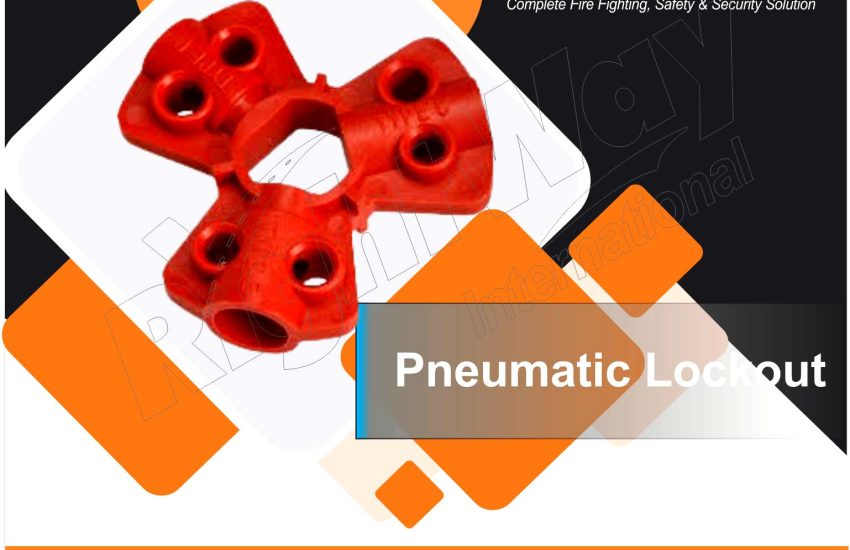Pneumatic Lockouts are critical safety devices designed to prevent accidental release of compressed air in industrial and maintenance environments. By ensuring that pneumatic systems are securely locked out during maintenance or repair, these lockouts help protect workers from hazardous energy sources and potential injuries. This article delves into the importance of pneumatic lockouts, their types, applications, and best practices for use.
The Importance of Pneumatic Lockouts
Compressed air systems are commonly used in various industries, from manufacturing to construction. These systems can be dangerous if not properly managed, as the sudden release of compressed air can cause equipment to move unexpectedly or create high-pressure hazards. Pneumatic lockouts are essential for:
- Preventing Accidents: By ensuring that equipment cannot be inadvertently operated while being serviced, pneumatic lockouts help prevent injuries related to unexpected machine movements or pressure releases.
- Compliance with Safety Standards: Many regulations and safety standards, such as OSHA’s Lockout/Tagout (LOTO) standard, require proper lockout procedures to be in place to safeguard workers.
- Enhancing Maintenance Efficiency: Lockouts ensure that maintenance tasks are completed safely without the risk of sudden equipment activation, leading to more efficient and effective repairs.
Types of Pneumatic Lockouts
- Manual Valve Lockouts:
- Description: These lockouts are designed to secure manual valves used in pneumatic systems. They typically encase the valve handle or lever to prevent it from being turned.
- Benefits: Simple to use and effective for valves with a manual shut-off mechanism.
- Rotary Valve Lockouts:
- Description: Rotary valve lockouts are used for valves that operate by rotating. They often come with a mechanism to secure the valve in the closed position.
- Benefits: Ideal for rotary valves, ensuring that they cannot be inadvertently turned on during maintenance.
- Air Supply Lockouts:
- Description: These devices lock out the air supply lines, preventing the flow of compressed air to equipment. They typically feature a locking mechanism that fits onto the air line.
- Benefits: Provides a higher level of safety by isolating the entire air supply to the equipment.
- Combination Lockouts:
- Description: Combination lockouts are used in scenarios where multiple lockout points are needed. They combine several lockout devices into one, offering versatility.
- Benefits: Useful in complex systems with multiple valves and air lines requiring simultaneous lockout.
- Electrical-Pneumatic Lockouts:
- Description: For systems that integrate both electrical and pneumatic components, these lockouts combine methods to ensure both energy sources are secured.
- Benefits: Comprehensive protection for systems with multiple types of energy sources.
Applications of Pneumatic Lockouts
- Manufacturing Facilities: Used to lock out machinery and equipment during maintenance or repairs to prevent accidental operation.
- Construction Sites: Ensures that pneumatic tools and equipment are safely de-energized before servicing.
- Maintenance and Repair Shops: Protects technicians from accidental release of compressed air during repairs and adjustments.
- Chemical Processing Plants: Secures pneumatic systems that control the flow of chemicals or other hazardous substances.
Best Practices for Using Pneumatic Lockouts
- Proper Training: Ensure that all personnel involved in maintenance are trained in lockout/tagout procedures and the proper use of pneumatic lockout.
- Regular Inspections: Periodically inspect lockout devices for wear and tear to ensure they are functioning correctly.
- Clear Procedures: Develop and implement clear lockout procedures that detail how and when to use pneumatic lockout.
- Labeling: Clearly label lockout devices and tags to provide information about the maintenance being performed and the personnel involved.
- Compliance: Stay updated with safety regulations and standards related to lockout/tagout to ensure ongoing compliance.
Conclusion
Pneumatic lockout play a vital role in maintaining a safe working environment by preventing the accidental release of compressed air. By understanding the different types of lockout, their applications, and best practices for use, facilities can enhance safety and compliance while protecting workers from potential hazards associated with pneumatic systems. Proper implementation of pneumatic lockout not only adheres to safety regulations but also contributes to a more secure and efficient working environment.


